





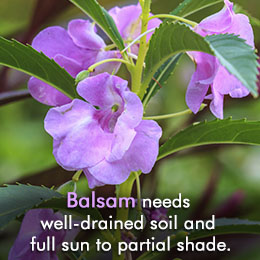 Unlike other types of impatiens, balsam plants are tropical species, which can be grown in direct sun.Balsam plants belong to the genus Impatiens, which has around 1000 species of flowering plants. The name balsam is often used interchangeably with impatiens. In fact, tropical species of impatiens are referred to as balsam. Most of the balsam plants are native to Southeast Asia, but are grown in different parts of the world. They are easy to grow and are popular for their showy flowers. Most of the heirloom varieties produce flowers in shades of pink.
Unlike other types of impatiens, balsam plants are tropical species, which can be grown in direct sun.Balsam plants belong to the genus Impatiens, which has around 1000 species of flowering plants. The name balsam is often used interchangeably with impatiens. In fact, tropical species of impatiens are referred to as balsam. Most of the balsam plants are native to Southeast Asia, but are grown in different parts of the world. They are easy to grow and are popular for their showy flowers. Most of the heirloom varieties produce flowers in shades of pink.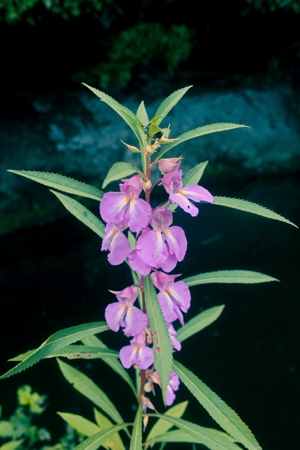
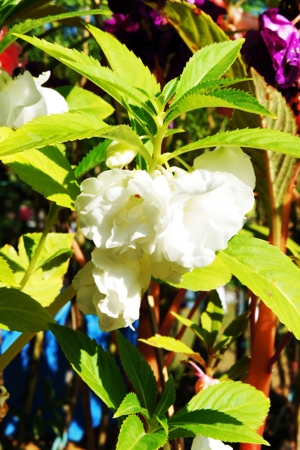
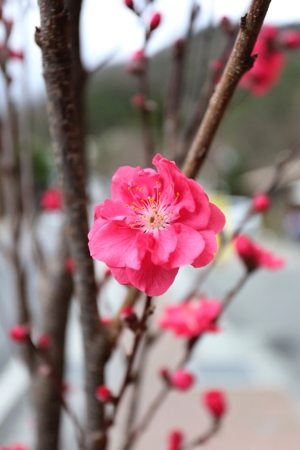 Balsam cultivars with differently colored flowersGrowing Balsam PlantsUsually, balsam plants are grown from seeds that are easy to germinate. You may sow the seeds directly in the garden, or start them indoors. If you want to grow the seeds indoors, start six weeks before the last frost. Keep the soil moist, so that the seeds germinate within a week or two. The ideal temperature for germination is 70°F. It is not necessary to cover the seeds with soil, as exposure to light leads to faster germination. You can transplant the seedlings, once the outside temperature warms up. The seedlings must attain a minimum height of two inches, before you transplant them. It is always better to plant balsam in groups of five to six plants. You may sow the seeds in the garden, after the last frost.
Balsam cultivars with differently colored flowersGrowing Balsam PlantsUsually, balsam plants are grown from seeds that are easy to germinate. You may sow the seeds directly in the garden, or start them indoors. If you want to grow the seeds indoors, start six weeks before the last frost. Keep the soil moist, so that the seeds germinate within a week or two. The ideal temperature for germination is 70°F. It is not necessary to cover the seeds with soil, as exposure to light leads to faster germination. You can transplant the seedlings, once the outside temperature warms up. The seedlings must attain a minimum height of two inches, before you transplant them. It is always better to plant balsam in groups of five to six plants. You may sow the seeds in the garden, after the last frost.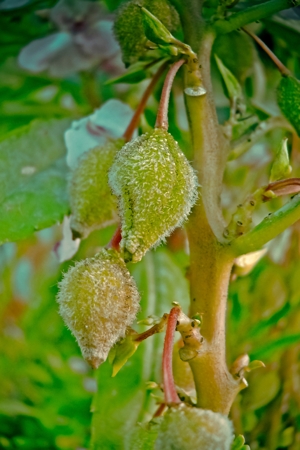 Seedpods of the balsam plantLocation and PlantingBalsam plants need full to partial sun for a healthy growth. In regions with very hot summers, plant them in partial shade, or shade them from the afternoon sun. Too much sun may cause browning of foliage, whereas too much shade may make the balsam plant leggy and flowerless. The soil must be well-drained and moist, but not soggy. Soil pH can be anywhere between 6.1 and 7.5. Before transplanting the seedlings, add some compost and break soil clumps. You may also use a time release fertilizer during transplanting.
Seedpods of the balsam plantLocation and PlantingBalsam plants need full to partial sun for a healthy growth. In regions with very hot summers, plant them in partial shade, or shade them from the afternoon sun. Too much sun may cause browning of foliage, whereas too much shade may make the balsam plant leggy and flowerless. The soil must be well-drained and moist, but not soggy. Soil pH can be anywhere between 6.1 and 7.5. Before transplanting the seedlings, add some compost and break soil clumps. You may also use a time release fertilizer during transplanting.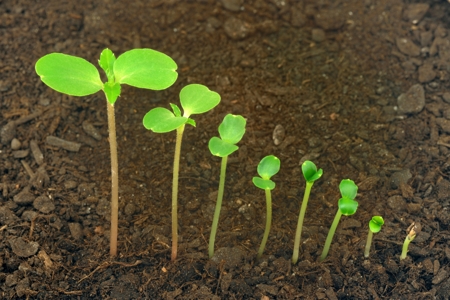 Balsam seed growth stages
Balsam seed growth stages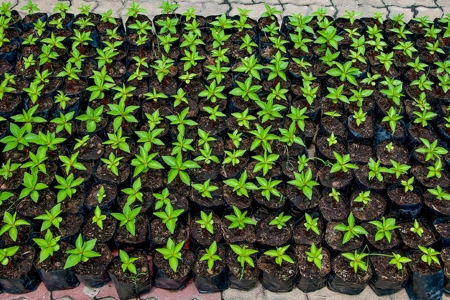 Balsam seedlingsWatering and FeedingDuring dry weather, water these plants thrice a week. Potted plants need frequent watering. Keep the soil moist, if you want the balsam plant to bloom continuously. It is always better to water the plant from below, rather than exposing the foliage to moisture that may cause powdery mildew. You may also opt for a soaker hose for watering these plants. A drip line system is also ideal for plants like balsam. Water them in the morning, so that excess moisture on the plants gets removed by the evening. This is good for preventing certain diseases. Mulching is beneficial for retaining moisture of the soil, during dry weather. Once established, balsam plants require minimal care. Use a general-purpose fertilizer occasionally. However, feed them twice a month during the growing season.Pests and DiseasesDiseases and pest attacks are not common in these plants. However, aphids, spider mites, and white flies may attack balsam. Spider mites feed on the leaves that may turn yellow and mottled. The infested parts may have web-like structures. In case of heavy infestation, the affected plants may die. In that case, use miticides to get rid of these pests. For small-scale infestation, remove weeds and the affected plants. Introduce ladybug larvae that feed on these mites. For white flies, use sticky traps and pesticides. You can also remove the flies with a strong spray of water. Do this once in every few days, to get rid of white flies. You may use organic or inorganic pesticides for controlling aphids.You can prune tall and leggy plants to make them compact and bushy. Pinch off the tips (just above the leaf joints), so that the plant develops new growth. Make sure that you bring the plant indoors during cold weather. If you do not want these plants in the next growing season, remove the seedpods at regular intervals. Otherwise, they will explode and get dispersed. You may also collect the seeds for future use. Allow them to dry properly, before storing in plastic bags.In short, growing balsam plants is not a difficult task. However, some species may turn invasive. So, remove the seed pods whenever possible. Balsam plants come in different types, including some dwarf varieties. Tomb thumb mix is a dwarf plant that grows to a height of around 10 inches. Some cultivars produce double-layered and multicolored flowers. There are numerous varieties that produce flowers in different colors. So, get the balsam plant of your choice and enhance the looks of your garden.
Balsam seedlingsWatering and FeedingDuring dry weather, water these plants thrice a week. Potted plants need frequent watering. Keep the soil moist, if you want the balsam plant to bloom continuously. It is always better to water the plant from below, rather than exposing the foliage to moisture that may cause powdery mildew. You may also opt for a soaker hose for watering these plants. A drip line system is also ideal for plants like balsam. Water them in the morning, so that excess moisture on the plants gets removed by the evening. This is good for preventing certain diseases. Mulching is beneficial for retaining moisture of the soil, during dry weather. Once established, balsam plants require minimal care. Use a general-purpose fertilizer occasionally. However, feed them twice a month during the growing season.Pests and DiseasesDiseases and pest attacks are not common in these plants. However, aphids, spider mites, and white flies may attack balsam. Spider mites feed on the leaves that may turn yellow and mottled. The infested parts may have web-like structures. In case of heavy infestation, the affected plants may die. In that case, use miticides to get rid of these pests. For small-scale infestation, remove weeds and the affected plants. Introduce ladybug larvae that feed on these mites. For white flies, use sticky traps and pesticides. You can also remove the flies with a strong spray of water. Do this once in every few days, to get rid of white flies. You may use organic or inorganic pesticides for controlling aphids.You can prune tall and leggy plants to make them compact and bushy. Pinch off the tips (just above the leaf joints), so that the plant develops new growth. Make sure that you bring the plant indoors during cold weather. If you do not want these plants in the next growing season, remove the seedpods at regular intervals. Otherwise, they will explode and get dispersed. You may also collect the seeds for future use. Allow them to dry properly, before storing in plastic bags.In short, growing balsam plants is not a difficult task. However, some species may turn invasive. So, remove the seed pods whenever possible. Balsam plants come in different types, including some dwarf varieties. Tomb thumb mix is a dwarf plant that grows to a height of around 10 inches. Some cultivars produce double-layered and multicolored flowers. There are numerous varieties that produce flowers in different colors. So, get the balsam plant of your choice and enhance the looks of your garden.
How to Grow and Care for Grape Ivy Plant
Sedum: How to Plant, Grow, and Care for Sedum Flowers
Sunflowers: How to Plant, Grow, and Care for Sunflower Plants
Sedum: How to Plant, Grow, and Care for Sedum Flowers
Sunflowers: How to Plant, Grow, and Care for Sunflower Plants
Copyright © www.100flowers.win Botanic Garden All Rights Reserved